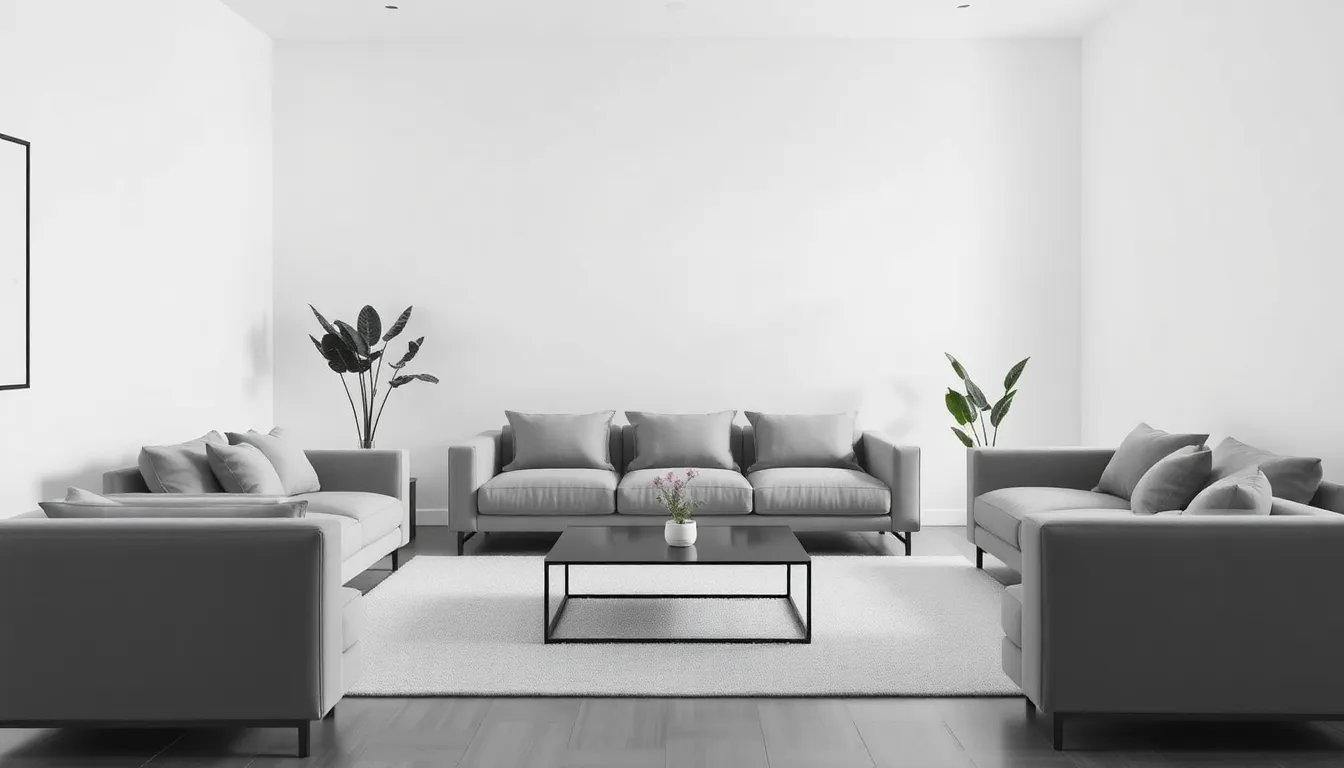In a world cluttered with distractions and overwhelming choices, the phrase “less is more” has never been more relevant. Imagine walking into a room filled with a million knick-knacks—it’s like a treasure hunt gone wrong! Simplifying life can lead to clarity and peace, making it easier to focus on what truly matters.
Embracing minimalism doesn’t mean living like a monk in a cave; it’s about making intentional choices that enhance quality over quantity. Whether it’s decluttering your space or streamlining your to-do list, less can actually lead to more happiness, creativity, and even productivity. So, why not give it a shot? After all, who wouldn’t want to trade chaos for calm?
Table of Contents
ToggleUnderstanding the Concept of Less Is More
The idea of “less is more” resonates deeply in a world filled with distractions. This concept promotes the benefits of simplicity, emphasizing intentional choices that lead to clarity and peace.
Historical Background
The phrase “less is more” gained popularity in the 20th century thanks to architect Ludwig Mies van der Rohe. He advocated for minimalist design, focusing on clean lines and functional spaces. In the 1960s, minimalist art emerged, rejecting excess in favor of simplicity. Artists like Donald Judd and Agnes Martin embraced this approach, reflecting the same principles in their work. Cultural shifts during this era encouraged people to reconsider consumerism. As a result, minimalism became a lifestyle choice for many seeking balance in their lives.
Key Principles
Several key principles define the notion of “less is more.” Simplicity stands at the forefront, emphasizing the quality of items and experiences over quantity. Intentionality leads decision-making, ensuring that every possession and choice serves a purpose. Clarity follows, granting individuals a focused mindset free from distractions. Embracing these principles fosters a sense of calm and well-being. By prioritizing meaningful experiences over material accumulation, individuals unlock creativity and productivity. Minimalism encourages thoughtful living, transforming environments and daily routines.
Minimalism in Design

Minimalism in design emphasizes the concept that simplicity enhances user experience. By removing extraneous elements, designers create environments that feel open and inviting. Clarity often leads to greater visual impact, allowing essential features to stand out.
Visual Aesthetics
Visual aesthetics in minimalism focus on clean lines and balanced compositions. A monochromatic palette frequently defines minimal spaces, creating a calming atmosphere. Well-placed negative space invites the eye to rest and concentrate on key design elements. Furniture selections prioritize sleek forms, ensuring each piece serves a purpose without overwhelming the visual field. Overall, a clutter-free design allows users to appreciate aesthetics without distractions.
Functionality Over Form
Functionality over form guides minimalist design principles, ensuring that each element offers practical value. Designers often prioritize usability, enhancing overall experience through intuitive layouts. By reducing unnecessary features, products become more approachable and easier to engage with. Essential items often integrate multiple functions to maximize utility without crowding spaces. Ultimately, this focus on functionality cultivates environments that promote efficiency and satisfaction.
Less Is More in Lifestyle
Embracing minimalism in lifestyle choices promotes clarity and fulfillment. Individuals decluttering their lives often encounter significant benefits.
Simplifying Possessions
Simplifying possessions leads to a more tranquil living space. Keeping fewer items reduces stress and allows for easier organization. Prioritizing quality over quantity enhances overall satisfaction. Focusing on meaningful objects fosters a deeper connection to what individuals own. Many people find joy in their surroundings when they curate their belongings intentionally. Results reveal that individuals experience increased happiness in simpler environments. Studies show that a significant reduction in physical clutter correlates with improved mental well-being.
Mental Clarity
Mental clarity improves when distractions diminish. Removing unnecessary commitments frees up time for what truly matters. Prioritizing essential tasks leads to heightened productivity and focus. Enhancing mindfulness makes everyday activities more meaningful. Effective prioritization reduces feelings of overwhelm and fosters calm. People report increased creativity when their minds aren’t cluttered by excess. Adopting a minimalist mindset contributes to better decision-making and clarity in personal goals.
Applications in Various Fields
The principle of “less is more” finds relevance across several disciplines, including art, architecture, and communication. This philosophy encourages simplicity and intentionality, allowing for deeper connections and more impactful experiences.
Art and Architecture
Minimalist art movements emphasize the importance of reduction in expression. Artists often distill forms and colors, ensuring that each element contributes meaningfully. This approach highlights the beauty in simplicity, evoking powerful responses with less clutter. Architectural design reflects similar values, as exemplified by Mies van der Rohe’s work. In spaces designed with minimalism, visual clarity prevails. Open environments enhance functionality, inviting occupants to engage with their surroundings deeply.
Writing and Communication
Effective writing embraces clarity and brevity. Writers focus on conveying ideas through simple, straightforward language that resonates with audiences. Each sentence serves a purpose, eliminating unnecessary words and distractions. Communication, whether verbal or written, benefits from this streamlined approach. Reducing jargon increases accessibility, enabling more people to understand complex topics. Prioritizing essential information ensures impactful messages that captivate readers and listeners alike.
Embracing the “less is more” philosophy can lead to a more fulfilling and intentional life. By prioritizing simplicity and clarity individuals can cultivate environments that enhance well-being and creativity. This approach not only transforms personal spaces but also influences interactions and decision-making.
As distractions fade away the focus shifts towards what truly matters. Adopting minimalism fosters deeper connections with possessions and experiences allowing for a richer and more meaningful existence. Ultimately the journey towards minimalism is a powerful step towards achieving peace and clarity in a chaotic world.





